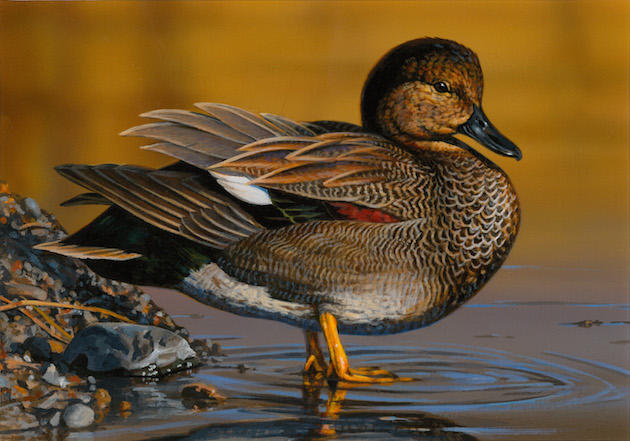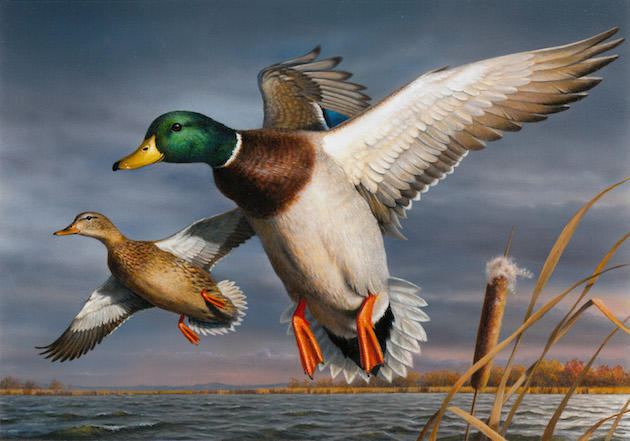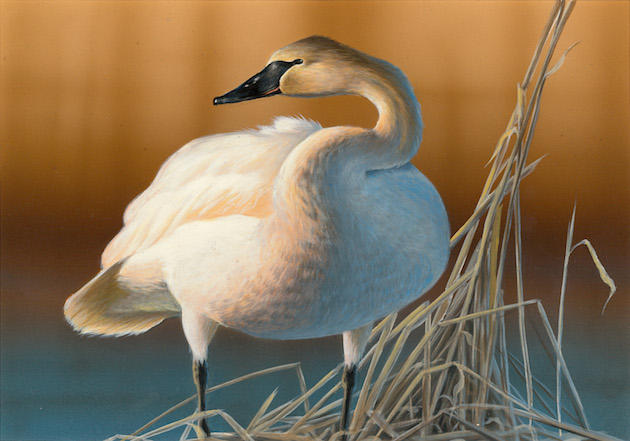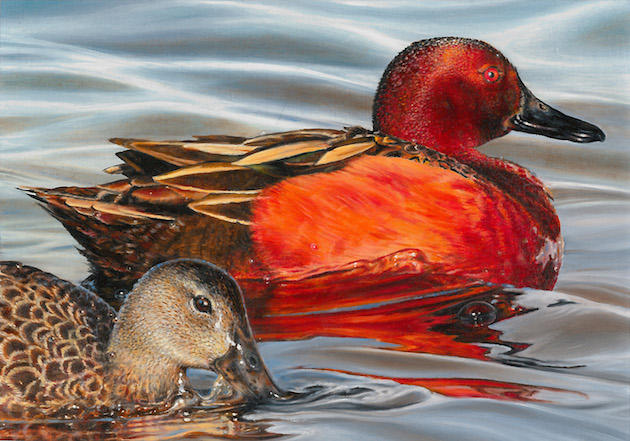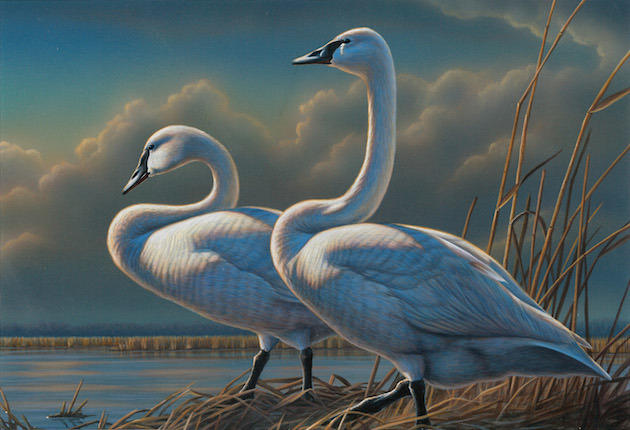Artwork via the USFWS Flickr gallery.
Waterfowlers have barely used their 2015-16 Federal Duck Stamps, but the US Fish & Wildlife Service is already deciding on the next Stamp’s design. The decision of whose artwork will appear on next year’s Duck Stamp will be decided this weekend, September 18 and 19.
The annual art competition brings together dozens of American paintings for a shot at gracing the coveted conservation stamp. While many know the Stamp—formally known as the Federal Migratory Bird Hunting & Conservation Stamp—goes to fund waterfowl conservation, few know what goes into the contest itself.
The Duck Stamp first came into being in 1934, with Jay N. “Ding” Darling painting his famous pair of mallards cupped over a marshland. However, the first Stamp contest was not held until 1949, when Victor S. McCloskey Jr.’s trumpeter swan design was chosen for the 1950-51 season.
Each year, USFWS selects five species of waterfowl as candidates for the stamp. The choices come from the four species not selected the preceding year and one additional choice. Artists had the option of painting gadwalls, mallards, blue-winged teal, cinnamon teal, or trumpeter swans for the 2016-17 Stamp, following the ruddy duck’s selection for the 2015-16 artwork.
Entries were accepted between June 1 and August 15, 2015. Any US citizen 18 years or older could submit a scene depicting one of the species in its natural habitat. USFWS received 157 entries for the 2016-17 contest, with pieces ranging from simple to ultra-realistic.
Artwork is judged on a number of criteria. The design must be more than beautiful: It has to be accurate (birds in spring scenes have to have timely plumage, for example), feature live bird(s) as the focal point of the image, and be conducive to replication on the small stamp. Space must be left for text to appear. Simplicity and originality are key.
Though there are stipulations on size and matting, the medium is not specified by USFWS. Only photographs and computer-generated pieces are excluded.
The only federally legislated art contest annually held in the United States, the Federal Duck Stamp contest is both free and open to public attendance, as well as streamed live online for those unable to attend in person. The contest was exclusively held in Washington, D.C., from its beginnings in 1949 until 2004. Since then, the judging has been held at various locations to give prospective attendees a chance to see the event close to their homes.
This year’s judging will be held in Shepherdstown, West Virginia.
Winning the stamp contest is a career highlight for any artist. The winner travels across the country to various waterfowl events as a guest speaker and receives a pane of Duck Stamps signed by the Secretary of the Interior. The winner’s work is immortalized on the stamp itself, but their subsequent work can be accompanied by the label “by the Federal Duck Stamp artist.”
The winner’s design will be seen my millions of avid waterfowl hunters and duck stamp collectors for years to come, and will join the works of outstanding waterfowl artists such as two-time Duck Stamp winner David Maass.
Starting Friday at 10 a.m. EST, five art, waterfowl, and stamp authorities will begin selecting the winning design. The winning entry will be named at noon on Saturday.
This year’s judging will also feature a free screening of a documentary about the Duck Stamp. The film—”The Million Dollar Duck”—will be shown Friday at 7 p.m.
Here are some of the entries for the 2016-17 stamp, in no particular order. For the full list of entries, visit the USFWS Flickr gallery.


